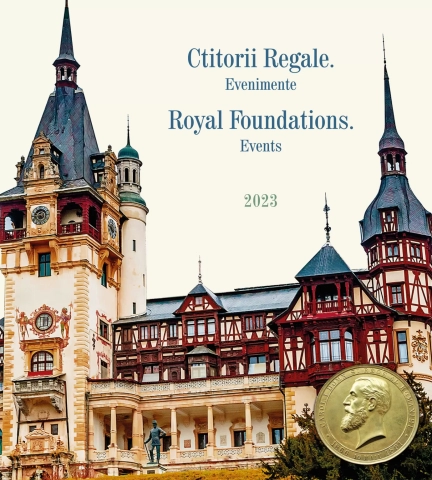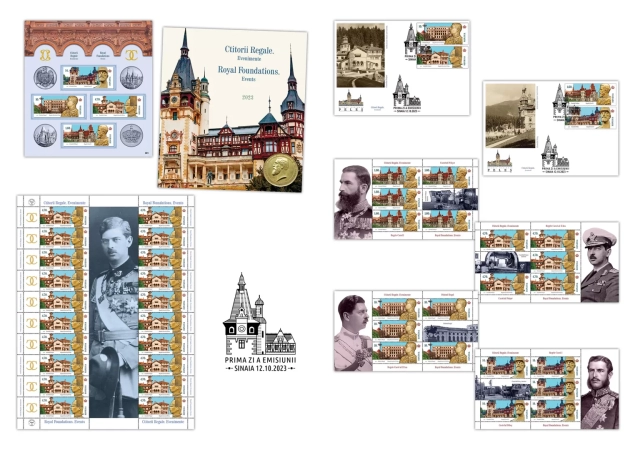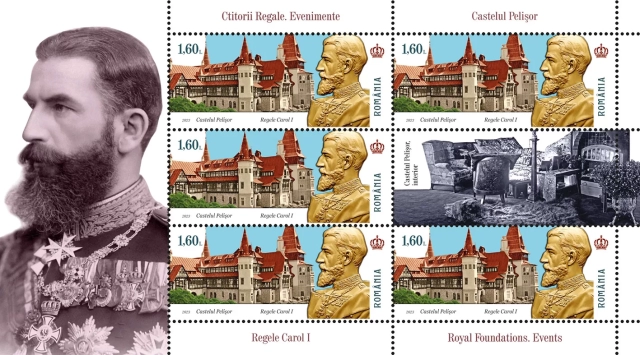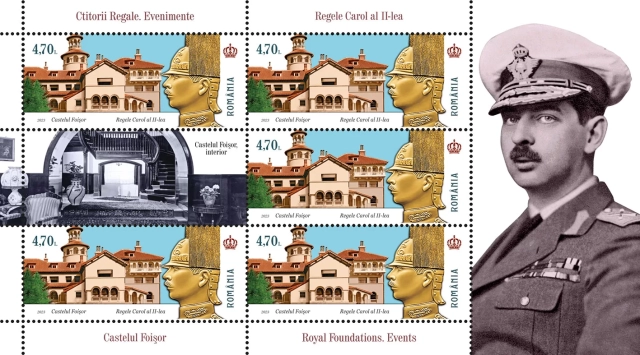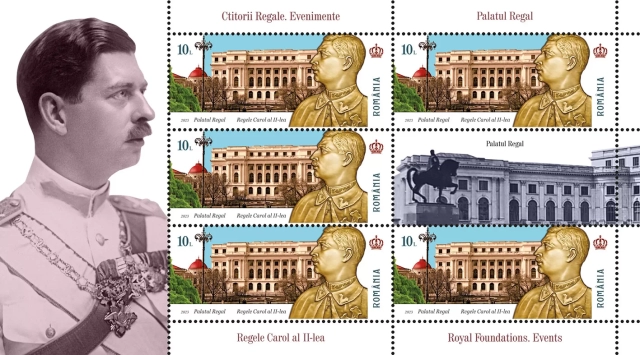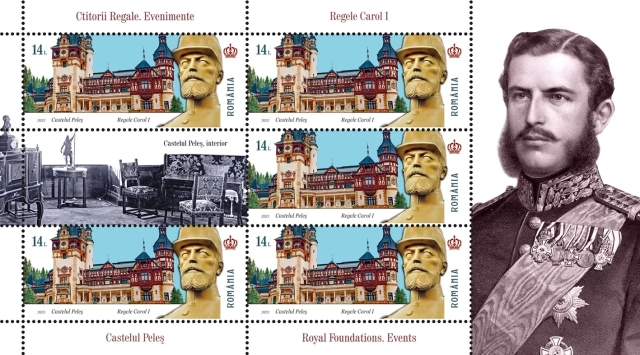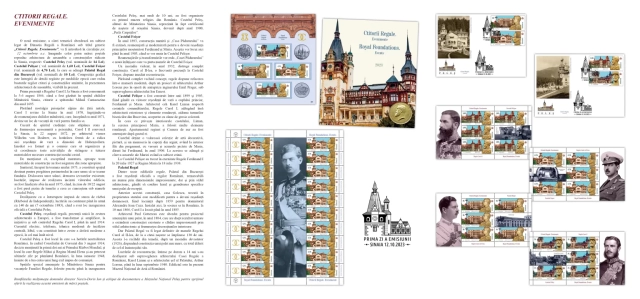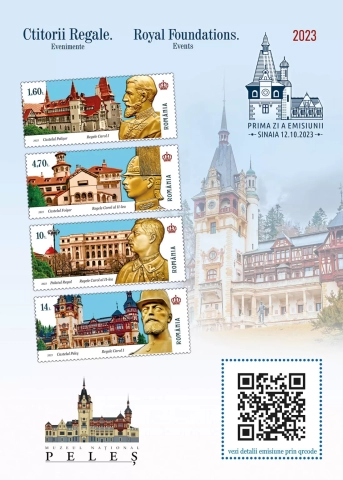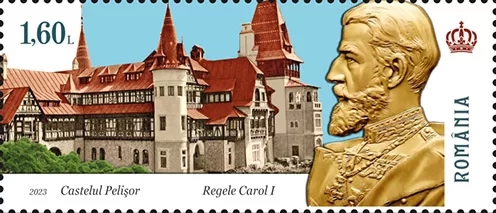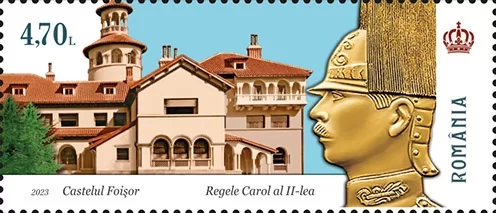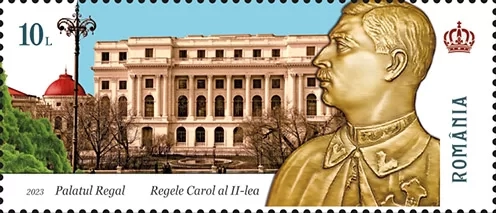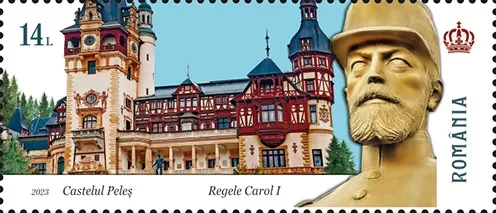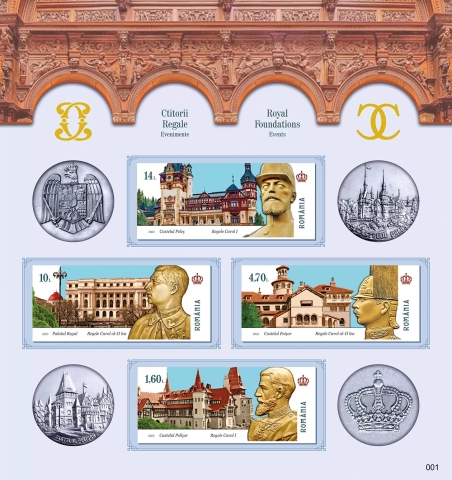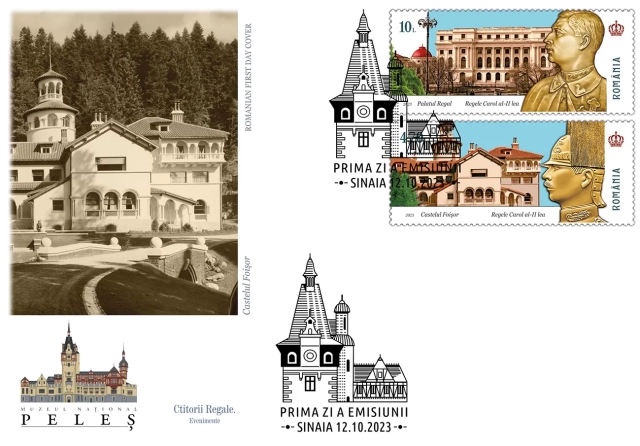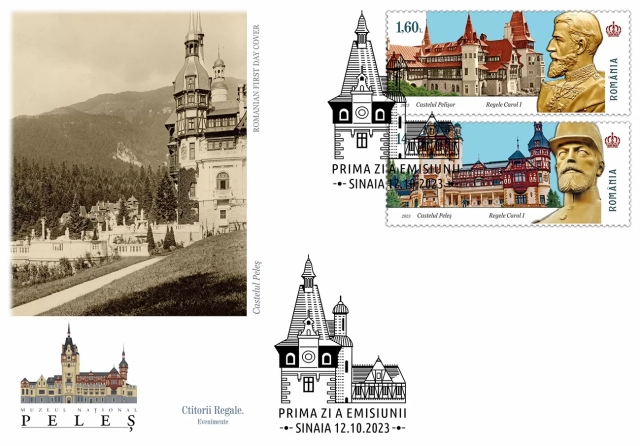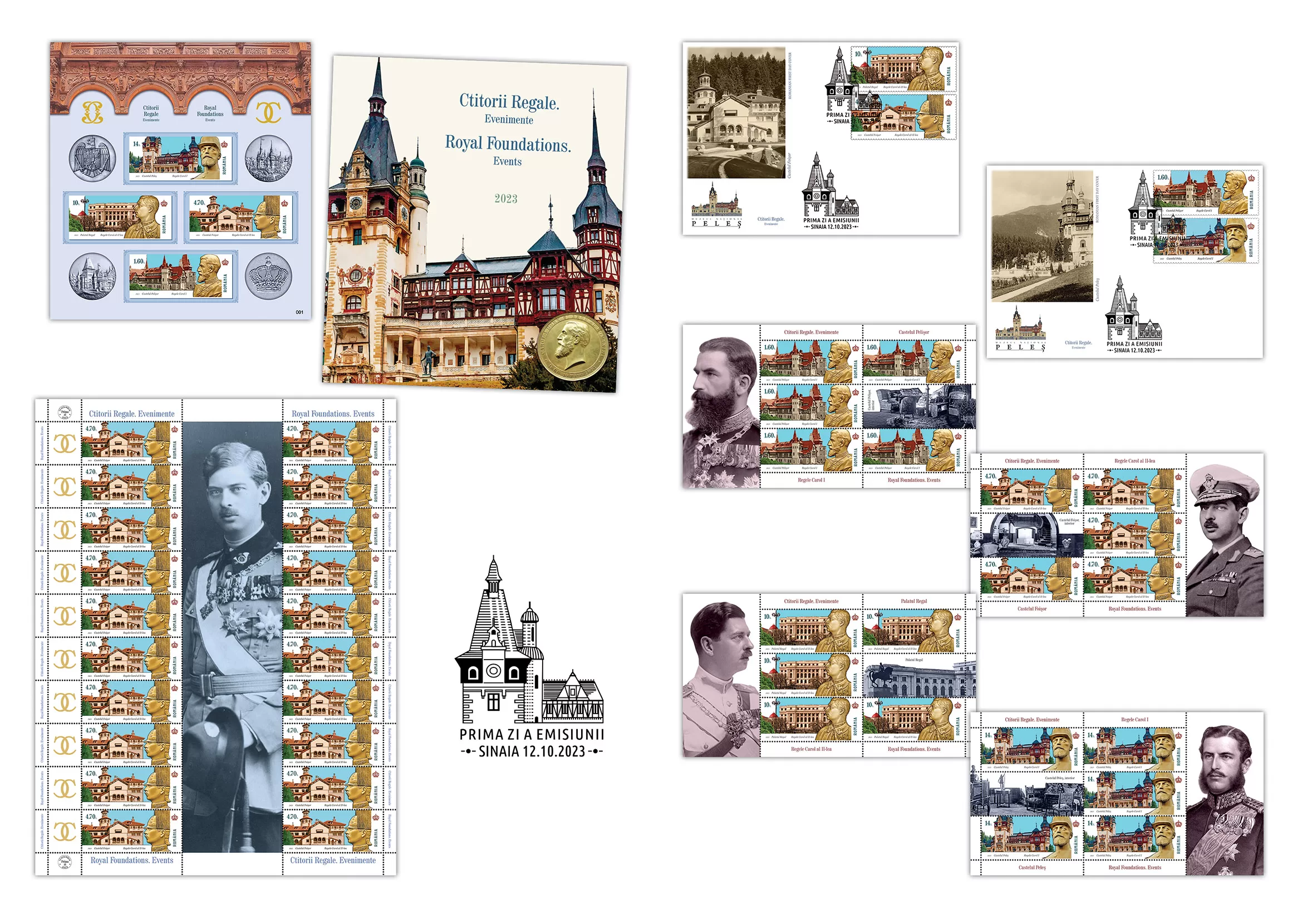 A new issue, whose thematic approaches a subject related to the Royal Dynasty of Romania under the general title “Royal Founders. Events”, will be introduced into circulation on Thursday, October 12, this year. The images of the four postage stamps reproduce the overall architecture of the buildings erected in Sinaia, namely, Peleș Castle (face value of Lei 14), Pelișor Castle (face value of Lei 1.60), Foișor Castle (face value of Lei 4.70), to which is added the Royal Palace in Bucharest (face value of Lei 10). The graphic composition is completed by details found on the medals of the era that reproduce the busts of the founding kings and the mentioned buildings, in the overall architectural presentation, visible nowadays.
A new issue, whose thematic approaches a subject related to the Royal Dynasty of Romania under the general title “Royal Founders. Events”, will be introduced into circulation on Thursday, October 12, this year. The images of the four postage stamps reproduce the overall architecture of the buildings erected in Sinaia, namely, Peleș Castle (face value of Lei 14), Pelișor Castle (face value of Lei 1.60), Foișor Castle (face value of Lei 4.70), to which is added the Royal Palace in Bucharest (face value of Lei 10). The graphic composition is completed by details found on the medals of the era that reproduce the busts of the founding kings and the mentioned buildings, in the overall architectural presentation, visible nowadays.
If you scan the QR code on the cover of the leaflet, you will discover a video that presents the story of the issue.
Peleș Castle was the place where Romania’s neutrality was decided at the Crown Council of August 3rd, 1914, a decision maintained during the first two years of the World War I, and the place where King Michael and Queen Mother Helen spent their last days on Romanian soil, in January 1948, before going into a long exile imposed by the communists.
The specially arranged spaces at the Sinaia Monastery for the Royal Family holidays, used practically until the inauguration of Peleș Castle, more than 10 years, were organized as the first religious museum in Romania. Peleș Castle, together with Sinaia Monastery, is in fact the birth certificate of Sinaia, which became after 1900 the “Pearl of the Carpathians”.
Foișor Castle
In 1893, the building, also called the “The Forester’s House”, was extended, refurbished and modernized to become the residence of the Crown Princes Ferdinand and Marie. They will live here until 1903, when they will move to Pelișor Castle.
The refurbishments and transformations will give the “The Forester’s House” a new look that will bear the name of Foișor Castle.
A violent fire, in 1932, completely destroyed the building. Carol II, a frequent visitor to Foișor Castle, immediately ordered its reconstruction. Completely abandoning the old concept, the King ordered the reconstruction in a modern manner, according to a project by the architect Arthur Lorenz, carried out by the enterprise of the engineer Emil Prager, under the supervision of the architect Ion Ernest.
Pelișor Castle was built between 1899 and 1903, and was intended as the future summer residence of the princely couple, Ferdinand and Marie. The Czech architect Karel Liman respected the requirements of the commissioner, King Carol I, but added Romanian elements to the exterior architecture, like the towers of the Bukovina churches, covered with coloured sandstone roofing tiles.
As for the castle interiors, Liman, at the request of Princess Marie, used many Romanian elements. The Queen’s apartment and the Golden Room were decorated to her taste.
The castle holds a valuable collection of decorative art, paintings, and a manuscript in silver covers, inside parchment pages, with verses and watercolours painted by Marie, given to Ferdinand in 1906. To these are added several of Marie’s watercolours depicting lilies.
King Ferdinand I passed into eternity at Pelișor Castle on July 20th, 1927 and Queen Marie on July 18th, 1938.
Royal Palace
Among all Royal buildings, the Palace in Bucharest was the official residence of the Romanian kings, remarkable not only for its impressive dimensions, but also for its architectural style, designed to give the luxury and grandeur specific to a reception palace.
Prior to this construction, the Golescu house, which became state property, was modified to become the residence of the ruler, and after 1859 it was the residence of Alexandru Ioan Cuza. Settled here on his arrival in Romania on May 10th, 1866, Carol I lived here until 1885.
The architect Paul Gottereau is approached for the design of a palace arrangement, in 1884, which results in the extension of the existing building, an impressive building by the architectural style and the beauty of the interior decorations.
But the Royal Palace will be forever linked to the name of King Carol II, whose 130th birthday will be celebrated. He rebuilt it from the ground up after a devastating fire (1926), ordering the construction of a larger palace, completely different from that of his predecessor.
The reconstruction works, which lasted 14 years, were carried out under the supervision of the architect of the Royal House of Romania, Karel Liman, and the chief architect of the Palace, Arthur Lorenz, until September 1940. The building is now the National Art Museum of Romania.
Romfilatelia thanks the manager Narcis-Dorin Ion and the documentation team of the Peleș National Museum for the support provided for the development of this postage stamps issue.
The philatelic issue will be available starting with Thursday, October 12th, 2023, in Romfilatelia’s shops network in Bucharest, Bacău, Brașov, Cluj-Napoca, Iași and Timișoara and online on https://romfilatelia.ro/store/.
For further information, please contact the Public Relations Office:
Tel: 021 / 336 93 92



